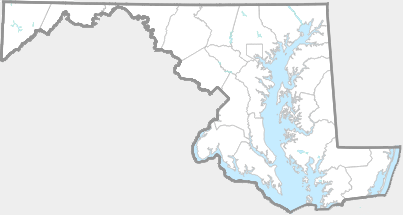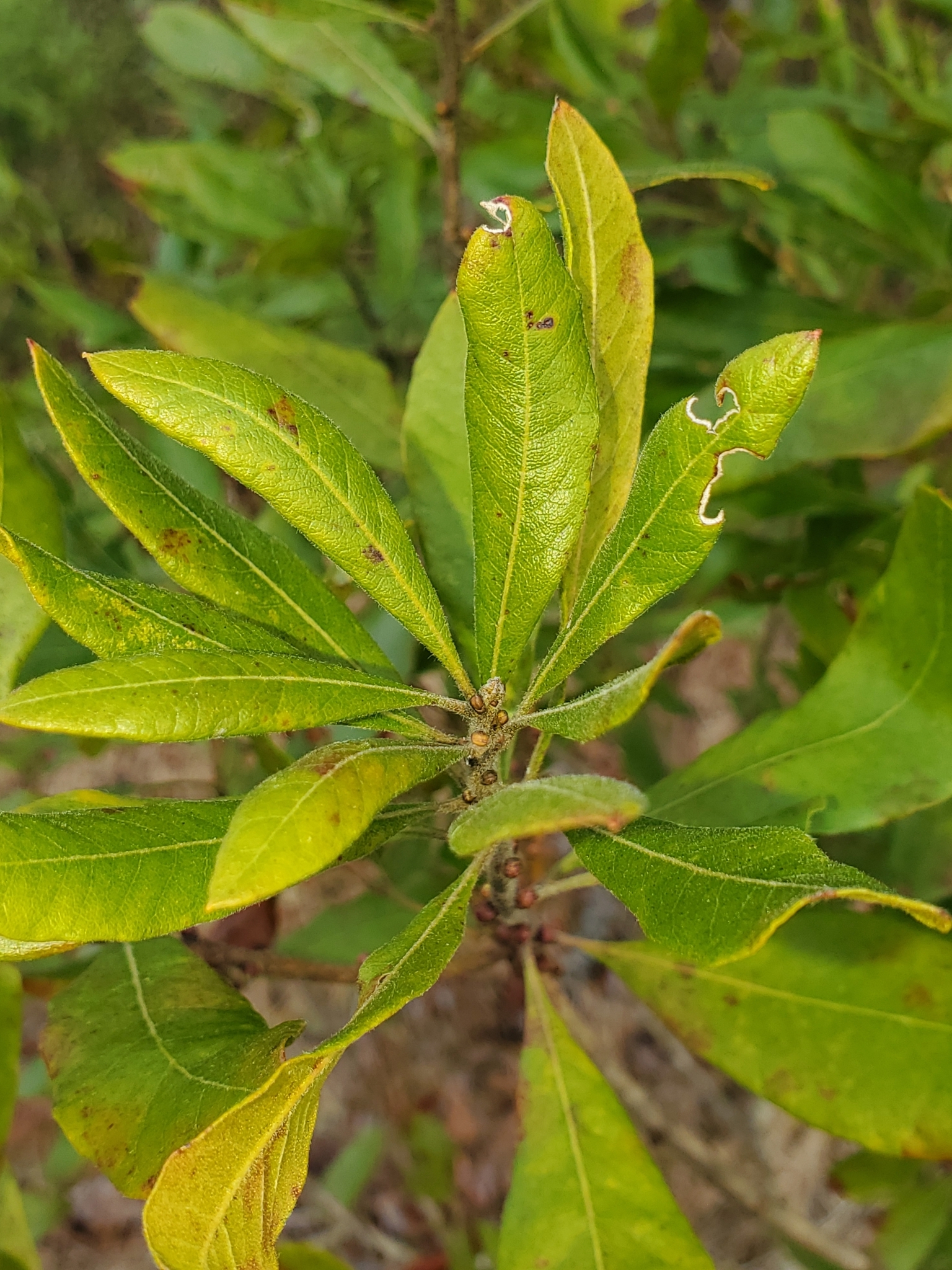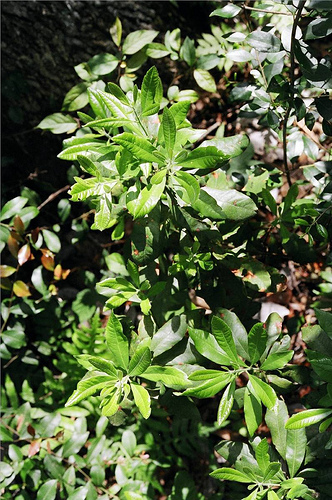

 Synonyms: Cerothamnus caroliniensis, Myrica caroliniensis.
Synonyms: Cerothamnus caroliniensis, Myrica caroliniensis.



Maryland's three Morella species are similar but with a little effort can be easily separated. First off, Wax Myrtle is by far the most common of the three species. The leaves are narrow - usually less than 1.5 cm wide - and the fruits are usually less than 2.5 mm in diameter at maturity. Northern Bayberry and Southern Bayberry have wider leaves - usually 1.5 to 4 cm wide - with fruits 3 to 7 mm in diameter. Northern Bayberry has resinous glands on the upper and lower surface of the leaves. Southern Bayberry has resinous glands on the lower surface and none (or very few) on the upper surface. Another difference between the two bayberry species is the twigs of Southern Bayberry are hairy and the twigs of Northern Bayberry are smooth.
Morella species are more common on the Coastal Plain than in the Piedmont. Wax Myrtle is the most common species in Maryland. Northern Bayberry is less common but still widespread on the Coastal Plain. Southern Bayberry is very rare and known from only a handful of populations in Maryland.
There are 6 records in the project database.
| GA | AL | WA | FR | CL | MO | HO | BA | BC | HA | CE | PG | AA | CV | CH | SM | KE | QA | CN | TA | DO | WI | SO | WO |


